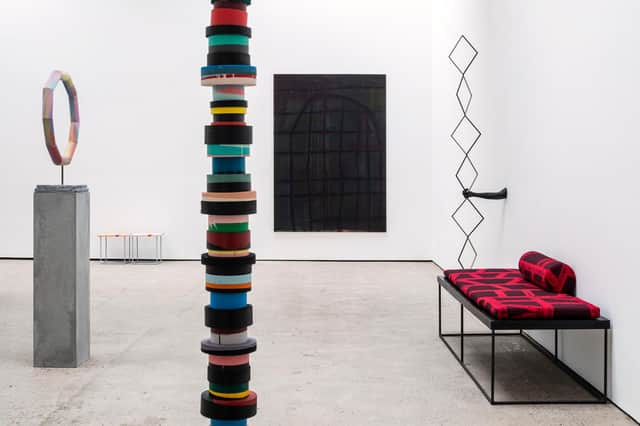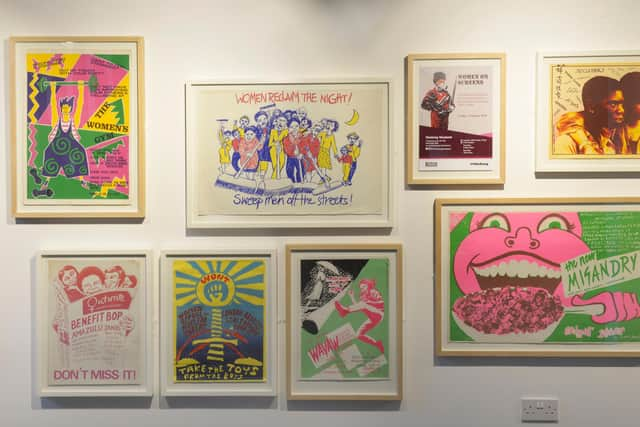Art review: Glasgow International - Across the City


This year’s post-lockdown Glasgow International has been nothing short of a triumph, with a wide-ranging Across the City programme running alongside festival commissions. The work of painter Carol Rhodes at Kelvingrove feels like a quiet oasis in a busy festival. See The World (****) examines Rhodes’ use of drawing in her practice, composing her imagined landscapes from a range of source material and drawing them first in pencil in a manner both rigorous and intuitive. In some cases, drawings are brought together with paintings to show the specific transitions she made between them.
The more attention one pays these aerial glimpses of airports and business parks, quarries and floods, the more they exert a timeless fascination. Though they are always unpeopled (very much echoing the empty landscapes of this pandemic year), they come from a profound engagement with the man-made world, as well as with the qualities of paint itself.
Advertisement
Hide AdJimmy Robert’s Tobacco Flower (****) at the Hunterian Art Gallery delves into the museum’s collection to explore the links between Glasgow and the Carribbean. Two textile designs by Charles Rennie Mackintosh using tobacco flowers become a starting point for musing on Glasgow’s relationship with tobacco (a source of great wealth in the 18th century) and, by extension, with the slave trade.


Robert traces intricate relationships among objects with a gently probing narrative. From a Whistler etching plate showing the artist’s Parisian Creole mistress to Edwin Morgan’s poem One Cigarette and Timorous Beasties’ Topical Tropical wallpaper, he brings the conversation forward to consider how black and queer histories are understood today. The self portrait taken in the Hunterian’s Mackintosh House wearing a magnificently huge Creole hoop earring feels like an affirming end point to his journey.
Ingrid Pollard has been working with archives too, particularly the Lesbian Archive, rehomed at Glasgow Women’s Library in the 1990s after the London organisation lost its funding. Pollard’s practice is as much about research as it is about stamping her own identity on her work, and No Cover Up (****) ranges around the whole library with posters by Hackney’s Lenthall Road Workshop, photographs and artists prints.
It’s a snapshot of the women’s movement in the 1980s and 1990s revealing its links with other movements: gay rights, section 28, Black Lives Matter. Pollard’s own interventions are more subtle: “Audio Books” which record voices of key women, placed among the books of the library, and “coming out survival kits”, developed during workshops with library staff and volunteers, and placed, cleverly, inside hollowed out books.
Women’s lives and work are the subject of Home Economics (****) at Govan’s Pearce Institute, bringing together images by photographer Franki Raffles with new work by Glasgow-based artist Margaret Salmon. Raffles’ photographs, shown at the Pearce Institute in 1990, captures the women of Govan at work, in offices, schools, a meat pie factory.
Salmon’s work is a gentle interrogation of the economics of women’s work. Alongside some intriguing new sculptures, a new film, Icarus (after Amelia), weaves together the story of pioneering solo pilot Amelia Earhart with footage of the women of Govan today, working, cooking, raising kids. Contemplative rather than tub-thumbing, her careful eye chooses what to show us then lets us to the thinking for ourselves.
Advertisement
Hide AdMeanwhile, artist Merlin James, who typically curates a show at 42 Carlton Place to coincide with GI, has created another quiet gem pairing the work of Scottish contemporary artist Louise Hopkins with acclaimed 20th-century abstractionist Paule Vézelay (****).
It’s a chance to discover (or rediscover) Vézelay, a British artist who joined the Parisian avant-garde in the 1920s, and had an instinctive sense of what to do with a line and how to place shapes in a picture plane. Showing their work together is a chance to explore how their practices converge and diverge: Vézelay’s seemingly effortless elegance (though perhaps it wasn’t), and Hopkins’ carefully worked abstraction, using pre-printed surfaces, folds and punctures to create limits within which to work.
Advertisement
Hide AdEva Rothschild demonstrates her aptitude with abstraction in a sculptural context at the Modern Institute’s Airds Lane space. In Peak Times (****), she places a selection of sculptures in the main gallery which display her natural understanding of space, context, balance and shape: a totem-pole-like tower of multi-coloured cast tapes, a rainbow decagon to look through, a tower of perfectly balanced triangles. Whether or not Rothschild’s work “reinvigorates traditional sculpture” (one wonders if this is necessary), this show demonstrates that she is very, very good at it. Perhaps that should be enough.
*For more dates and visitor information, see www.glasgowinternational.org. The Paule Vézelay/Louise Hopkins show at 42 Carlton Place (not on the GI website) runs until 4 July, Thurs-Sat, from 10am to 6pm.
A message from the Editor:
Thank you for reading this article. We're more reliant on your support than ever as the shift in consumer habits brought about by coronavirus impacts our advertisers.
If you haven't already, please consider supporting our trusted, fact-checked journalism by taking out a digital subscription at https://www.scotsman.com/subscriptions